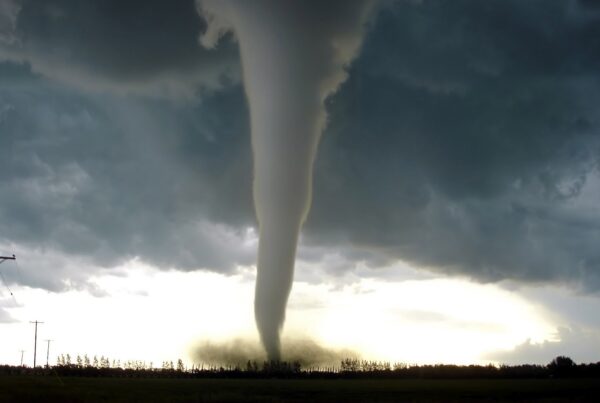 The spring of 2011 has been one of the deadliest tornado seasons on record. Living in a state that has its share of tornadoes, residents of Alabama as well as the other Southern and Midwestern states, know all too well how destructive tornadoes can be. Our house and office are equipped with weather alert radios, and there is a tornado siren that can be heard at both locations when Jefferson design loads to the interior portions of the country where tornadoes are most likely to occur. Perhaps it is more practical to increase the design wind speeds from 160 mph to 200 mph or even 250 mph. Even then, there are millions of buildings that remain as death traps. For residents of those structures, a retrofit storm shelter or safe room or possibly community storm shelters that are within a short distance of populated neighborhoods may offer the best chances for survival. County is under a severe weather warning including tornado warnings. April 27, 2011 is a day that will long be remembered in Alabama, as 241 people lost their lives due to an unprecedented number of large powerful tornadoes. There were EF-2 tornadoes during the early morning hours of April 27 within 15 miles of our home and office. The weather forecasters were saying the morning storms were just a warm up for what was to come in the Emergency Shelter afternoon. The forecasters were right. There were seven EF-3 or stronger long- Location track tornadoes that struck Alabama during the late afternoon and evening.
The spring of 2011 has been one of the deadliest tornado seasons on record. Living in a state that has its share of tornadoes, residents of Alabama as well as the other Southern and Midwestern states, know all too well how destructive tornadoes can be. Our house and office are equipped with weather alert radios, and there is a tornado siren that can be heard at both locations when Jefferson design loads to the interior portions of the country where tornadoes are most likely to occur. Perhaps it is more practical to increase the design wind speeds from 160 mph to 200 mph or even 250 mph. Even then, there are millions of buildings that remain as death traps. For residents of those structures, a retrofit storm shelter or safe room or possibly community storm shelters that are within a short distance of populated neighborhoods may offer the best chances for survival. County is under a severe weather warning including tornado warnings. April 27, 2011 is a day that will long be remembered in Alabama, as 241 people lost their lives due to an unprecedented number of large powerful tornadoes. There were EF-2 tornadoes during the early morning hours of April 27 within 15 miles of our home and office. The weather forecasters were saying the morning storms were just a warm up for what was to come in the Emergency Shelter afternoon. The forecasters were right. There were seven EF-3 or stronger long- Location track tornadoes that struck Alabama during the late afternoon and evening.
An EF-4 tornado formed southwest of Tuscaloosa and remained on the ground for 82 miles. Four miles of that path passed through Pleasant Grove, our home town. We are very familiar with what a large, powerful tornado can do. On April 8, 1998, an F-5 tornado followed a path only one mile northwest of the April 27 tornado. While we know what these storms are capable of, the building industry has not made many improvements in the construction of residential or commercial buildings constructed of wood or steel. These storms typically tear the structures apart completely, tear off the roof, tear portions of walls away, or move entire structures 10 feet, 20, feet or farther from their foundations. Nailed connections at corners, tees, rafter/top plates, ceiling joist/top plates that rely on the pull out strength of the nail perform poorly under tornadic wind loading. The only safe place in our typical residential structures during an EF-3 or stronger tornado is a reinforced concrete storm shelter or a retrofitted safe room. The only other option is an underground storm shelter if guaranteed survival is the objective. Shelters will reduce the death toll but will not reduce the property loss.
As building inspection engineers, we have the opportunity to advise building owners or buyers of where they should go during a tornado. The old advice of going to a room at the center of the lowest floor, while not bad advice, may prove to be fatal. There were a number of people that survived by lying in a bathtub and covering themselves with pillows or a small mattress. These “safe places” are not guaranteed to keep building’s inhabitants alive in a strong tornado.
Simple solutions may include extending coastal wind Dr. Greg Forbes of the Weather Channel has developed a tornado condition index that has been quite accurate in putting areas on alert that tornadoes may develop. He has predicted that conditions would be favorable for most of the storms in the South, the Midwest, and even the storm in Massachusetts. On April 27, the tor-con index for Tuscaloosa started the day at 9, or a 90% chance of a tornado within 50 miles. He upgraded the tor-con index to 10 later in the day. If we can just put this information to better use, lives can be saved at a minimum and hopefully in time, property damage can be reduced.
The storm missed both our house and office for which we will be forever grateful. Gwen and I want to thank the NABIE members that called to check on us after the storm. We were quite busy during the night of the storm and for the next four days with rescue efforts. The power was off so our answering machine did not pick up when the phone (which was still working) rang. It was truly a blessing to have people from around the country checking on our well being after such a disaster. We will do our best to return the favor but pray that none of you has to deal with such devastation.
*This article had been posted in the Spring 2011 edition of The Examiner.


